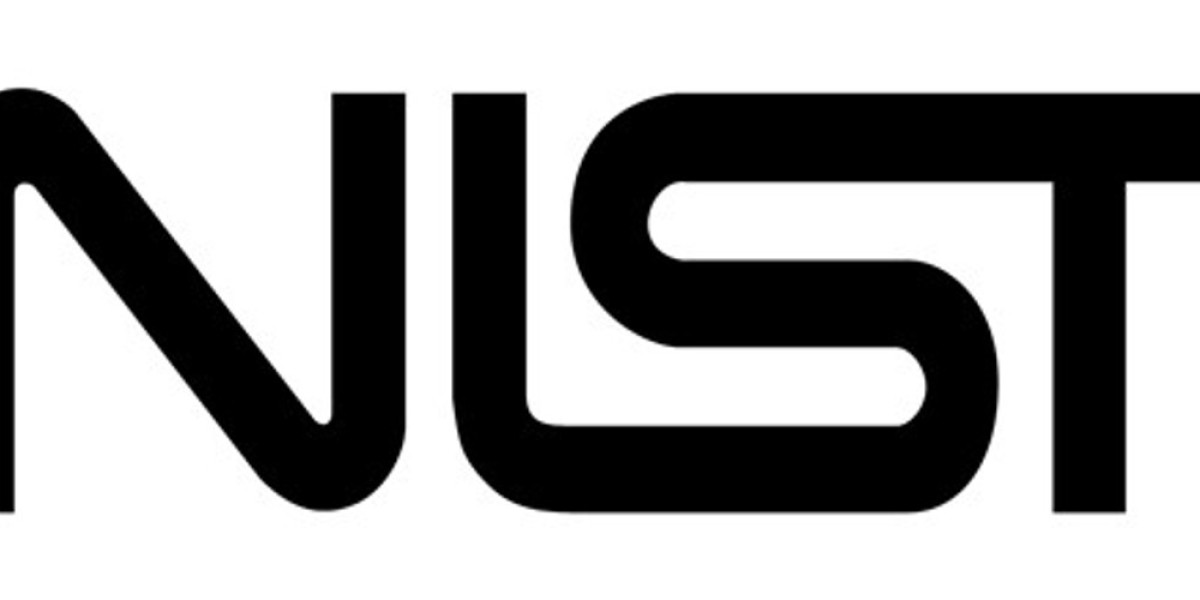The Software Rewrite: A Necessary Evil or a Strategic Reboot?
In the ever-evolving landscape of technology, software applications are the lifeline of contemporary companies. They power operations, get in touch with consumers, and drive development. However, software, like any complex system, ages. It can end up being creaky, hard to preserve, and not able to keep rate with changing service requirements and technological developments. This situation frequently leads companies to contemplate an extreme but in some cases required procedure: a software rewrite.
A software rewrite, at its core, is the procedure of reconstructing an existing software application from scratch. It's not just refactoring or patching up old code; it's a basic re-engineering effort, often involving a total overhaul of the codebase, architecture, and in some cases even the underlying innovation stack. It's a high-stakes endeavor, fraught with difficulties and potential pitfalls, however when approached strategically, it can revive a stagnant system and unlock significant company advantages.

This article spinning tool dives into the complicated world of software rewrites, exploring the reasons behind them, the various approaches available, the fundamental difficulties, and the very best practices to ensure a successful outcome. We will also analyze when a rewrite is genuinely the right course forward and when alternative techniques might be better suited.
Why Rewrite? Unpacking the Motivations
The decision to rewrite software is seldom ignored. It's generally driven by a confluence of elements that show the existing system is no longer fit for function. Here are a few of the most typical drivers:
- Accumulated Technical Debt: Over time, software can accumulate technical financial obligation-- the implied expense of future rework caused by choosing an easy service now instead of using a better approach. This financial obligation manifests as untidy code, ineffective architecture, and absence of paperwork. Rewriting can be viewed as a way to "pay off" this debt, permitting for a cleaner, more maintainable structure.
- Outdated Technology Stack: Technologies evolve rapidly. Software constructed on out-of-date frameworks, languages, or platforms can end up being difficult to keep, secure, and incorporate with modern systems. A rewrite permits migration to a more current and supported innovation stack, opening doors to much better performance, security, and access to a bigger pool of proficient designers.
- Scalability Limitations: As services grow, their software needs to scale appropriately. Systems designed for smaller sized user bases or less complicated operations may have a hard time to handle increased load, leading to efficiency bottlenecks and system failures. A rewrite can be architected with scalability in mind, making sure the application can manage future growth.
- Efficiency Issues: Sluggish performance can frustrate users, impact performance, and even harm a business's reputation. If performance concerns are deeply rooted in the architecture or codebase of an existing system, a rewrite might be the most reliable method to address them, enabling optimization from the ground up.
- Maintainability Nightmares: Legacy systems can become extremely tough and expensive to maintain. Inadequately documented code, convoluted reasoning, and an absence of understanding among current advancement groups can make even minor bug fixes a lengthy and risky undertaking. A rewrite can result in a more maintainable and reasonable codebase.
- Feature Expansion Obstacles: Adding new functions to an aging and complex system can end up being significantly difficult and pricey. The existing architecture may not be flexible adequate to accommodate brand-new performances without significant rework and potential instability. A rewrite can create a more extensible platform ready for future development.
Browsing the Rewrite Landscape: Different Approaches
As soon as the decision to rewrite is made, organizations are confronted with selecting the best approach. There are a number of methods, each with its own set of benefits and disadvantages:
The Big Bang Rewrite: This approach includes developing the whole new system in parallel with the existing one. As soon as the new system is total, the old one is turned off, and the new system is launched at one time. This is a high-risk, high-reward method.
- Pros: Potentially quicker general timeline if carried out perfectly; total break from legacy issues.
- Cons: Extremely dangerous; capacity for significant organization interruption during the switchover; large in advance investment; difficult to manage and check a massive system in isolation for a prolonged duration.
The Incremental Rewrite: This method concentrates on rewriting the system piece by piece, changing elements of the old system with brand-new, rewritten modules slowly. This permits a smoother shift and decreases the risk of a complete system failure.
- Pros: Lower risk compared to big bang; continuous delivery of worth as elements are rewritten; simpler to test and handle smaller sized increments; enables user feedback and adjustment throughout the procedure.
- Cons: Can be complicated to handle dependences between old and new parts; might take longer total to finish the entire rewrite; requires mindful planning and coordination.
The Strangler Fig Pattern: This is a specific type of incremental rewrite where the brand-new system is built around the old system, slowly "strangling" it piece by piece. New performances are developed and deployed as microservices or different applications, eventually replacing the core performances of the old system.
- Pros: Minimizes disruption to the existing system; enables for progressive migration of users to brand-new performances; assists in a microservices architecture; reduces risk through incremental releases.
- Cons: Requires cautious architecture and API style to incorporate new components with the old system; can be complicated to manage routing and information circulation between systems during the transition; needs a strong understanding of microservices principles.
The Rocky Road: Challenges and Pitfalls of Software Rewrites
Software rewrites are notoriously difficult and bring a considerable threat of failure. Various tasks have been delayed, over budget plan, or even deserted completely. Understanding the common pitfalls is essential for reducing threats and taking full advantage of the possibilities of success:
- Underestimating Complexity and Scope: Rewriting software is often more intricate and time-consuming than at first prepared for. Organizations might undervalue the dependencies, concealed functionalities, and large volume of work included in recreating an entire system.
- Loss of Domain Knowledge: Over time, knowledge about the complexities of the existing system can become fragmented or lost, specifically as original developers carry on. Rewriting without totally comprehending the nuances of the existing system can cause missed out on requirements and functionality spaces in the new system.
- The "Second System Effect": This phenomenon refers to the propensity to overload a new system with functions and improvements that were not present in the original. This can cause feature creep, increased complexity, and delays.
- Organization Disruption: Rewrites can interfere with existing organization procedures and workflows, particularly if the brand-new system presents substantial changes in performance or user interface. Cautious preparation and communication are important to reduce disruption and handle user expectations.
- Group Morale and Fatigue: Rewrites are typically long and requiring projects that can take a toll on advancement groups. Keeping team morale, inspiration, and focus throughout a lengthy rewrite is important for success.
- Preserving Feature Parity: Ensuring that the new system reproduces all the vital functionalities of the old system is critical for a smooth shift. Failing to accomplish function parity can result in user frustration and company interruptions.
- Presenting New Bugs: Even with rigorous testing, paragraph Rewriter rewrites can present new bugs and vulnerabilities. Extensive screening, including system, integration, and user approval screening, is vital to lessen the risk of post-launch concerns.
Browsing to Success: Best Practices for Software Rewrites
While tough, software rewrites can be successful when approached strategically and with careful planning. Here are some best practices to consider:
- Define Clear Objectives and Scope: Before embarking on a rewrite, plainly specify the objectives and objectives. What issues are you trying to resolve? What are the essential functions in the brand-new system? A distinct scope assists prevent function creep and keeps the project focused.
- Conduct Thorough Planning and Design: Invest significant time in planning and designing the brand-new system. This consists of specifying the architecture, selecting the right innovation stack, and recording requirements in detail. A strong blueprint is important for assisting the development procedure.
- Accept an Incremental Approach (When Possible): An incremental rewrite, like the Strangler Fig pattern, significantly decreases danger compared to a big bang technique. Breaking down the rewrite into smaller, manageable increments enables constant delivery of value and easier threat mitigation.
- Prioritize Robust Testing: Testing is vital in a rewrite task. Execute an extensive testing strategy, including unit tests, integration tests, system tests, and user approval testing. Automate testing anywhere possible to make sure constant quality control.
- Implement Continuous Integration and Delivery (CI/CD): CI/CD practices make it possible for faster feedback loops, decrease integration concerns, and facilitate regular releases. This is especially advantageous for incremental rewrites, enabling for faster shipment of new components.
- Preserve Open Communication and Stakeholder Engagement: Keep stakeholders informed throughout the rewrite process. Routine interaction, development updates, and demonstrations assist manage expectations and ensure alignment between technical teams and company stakeholders.
- Concentrate On Performance Monitoring and Optimization: Performance must be an essential factor to consider throughout the rewrite. Implement efficiency monitoring tools to identify traffic jams early on and optimize the system for speed and performance.
When to Say "No": Alternatives to Rewriting
Rewriting software is a considerable endeavor and should not be the default option. Before devoting to a rewrite, consider these options:
- Refactoring: Improving the internal structure of the existing code without changing its external behavior. Refactoring can deal with technical financial obligation and enhance maintainability without a complete rebuild.
- Re-architecting: Modifying the top-level structure of the system without always rewriting the entire codebase. This can enhance scalability and performance.
- Wrapping/Adapting: Creating a layer around the existing system to adapt it to brand-new technologies or incorporate it with modern systems. This can be a quicker and less disruptive technique than a full rewrite.
- System Retirement: In some cases, the system might merely be obsolete or no longer supply organization value. Retiring the system altogether might be the most cost-effective and strategic option.
Conclusion: Rewriting as a Strategic Choice
A software rewrite sentences generator is a complex and tough venture, but it can be a strategic need in specific scenarios. When faced with overwhelming technical financial obligation, out-of-date technology, or important scalability constraints, a well-planned and executed rewrite can renew aging systems, unlock innovation, and drive future development. Nevertheless, it is important to carefully weigh the pros and cons, check out alternatives, and approach the procedure with precise preparation, robust screening, and a clear understanding of the threats and difficulties included. A software rewrite need to be viewed not as a fast repair, however as a substantial financial investment in the future of the software and the company it supports.
Regularly Asked Questions (FAQs)
Q1: How do I understand if my software needs a rewrite?
- A1: Consider a rewrite if you are facing multiple of these concerns:
- Extensive technical financial obligation that hinders advancement and upkeep.
- An outdated technology stack that is no longer supported or limits innovation.
- Significant scalability or efficiency concerns that impact user experience or business operations.
- Extreme problem and cost connected with keeping or adding brand-new features to the existing system.
- Your team invests more time fixing bugs and working around limitations than developing brand-new performances.
Q2: What are the biggest threats of a software rewrite?
- A2: The most significant threats consist of:
- Cost and time overruns surpassing preliminary price quotes.
- Company interruption throughout the rewrite procedure and the shift to the new system.
- Intro of new bugs and vulnerabilities in the rewritten system.
- Loss of important domain understanding and functionality parity.
- Negative effect on team spirits and efficiency due to a lengthy and requiring project.
Q3: How long does a software rewrite usually take?
- A3: The timeline varies greatly depending upon the size and complexity of the system, the chosen method, and the team's abilities. It can range from several months for smaller systems to several years for big, intricate applications. An incremental method tends to extend the total timeline however minimizes threat and offers worth along the way.
Q4: What are the key elements for a successful software rewrite?
- A4: Key success aspects include:
- Clear objectives and scope.
- Extensive planning and architectural design.
- Choosing the right rewrite approach (incremental vs. big bang).
- Robust testing and quality control throughout the procedure.
- Strong task management and stakeholder communication.
- An experienced and devoted development group.
- Continuous tracking and optimization of the new system.
Q5: Is a software rewrite constantly the very best choice?
- A5: No, a rewrite is not always the best choice. Alternatives like refactoring, re-architecting, covering, and even system retirement must be considered initially. A rewrite ought to just be pursued when other alternatives are insufficient to address the underlying issues and accomplish the wanted business outcomes. It's a strategic decision that requires careful evaluation and justification.








